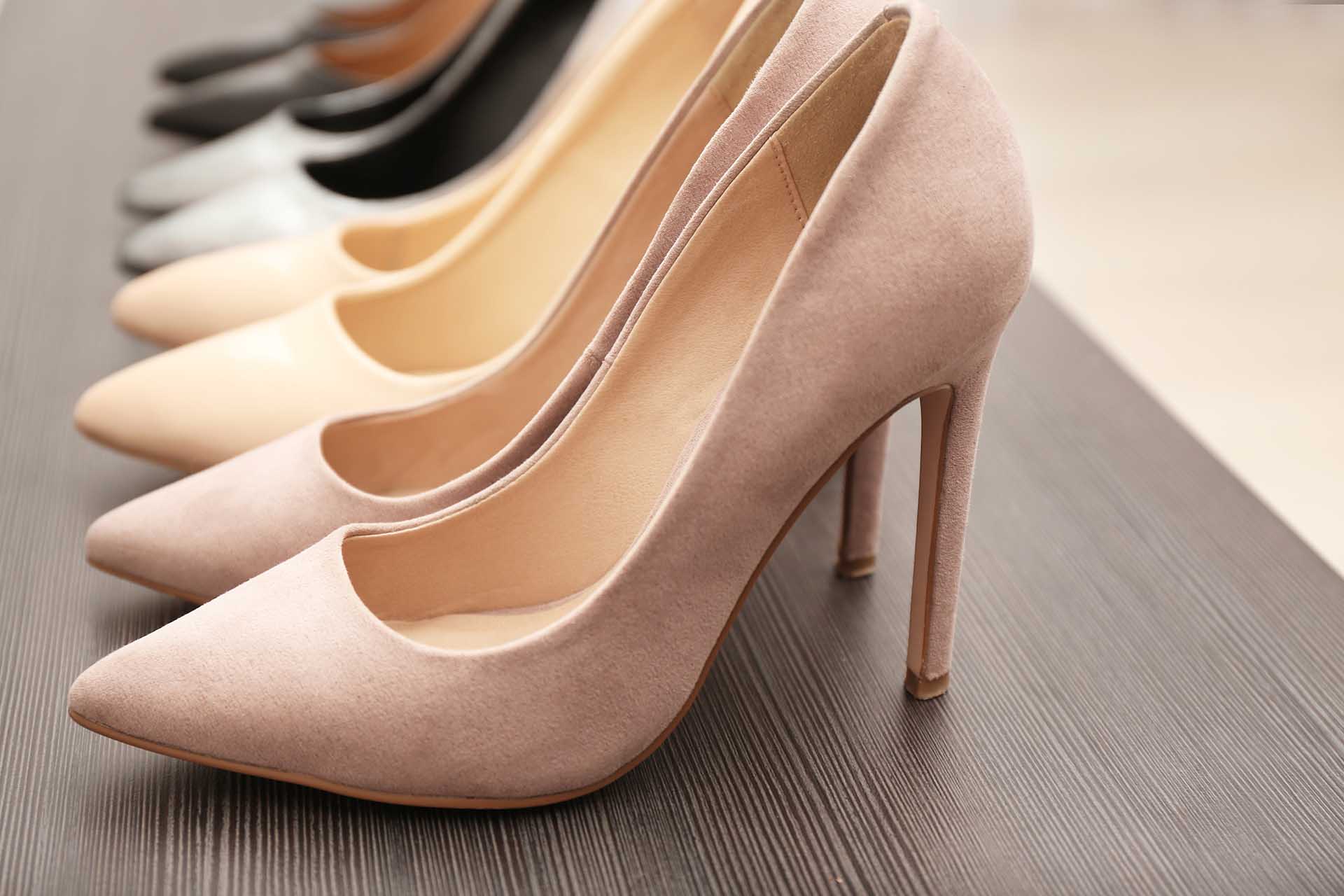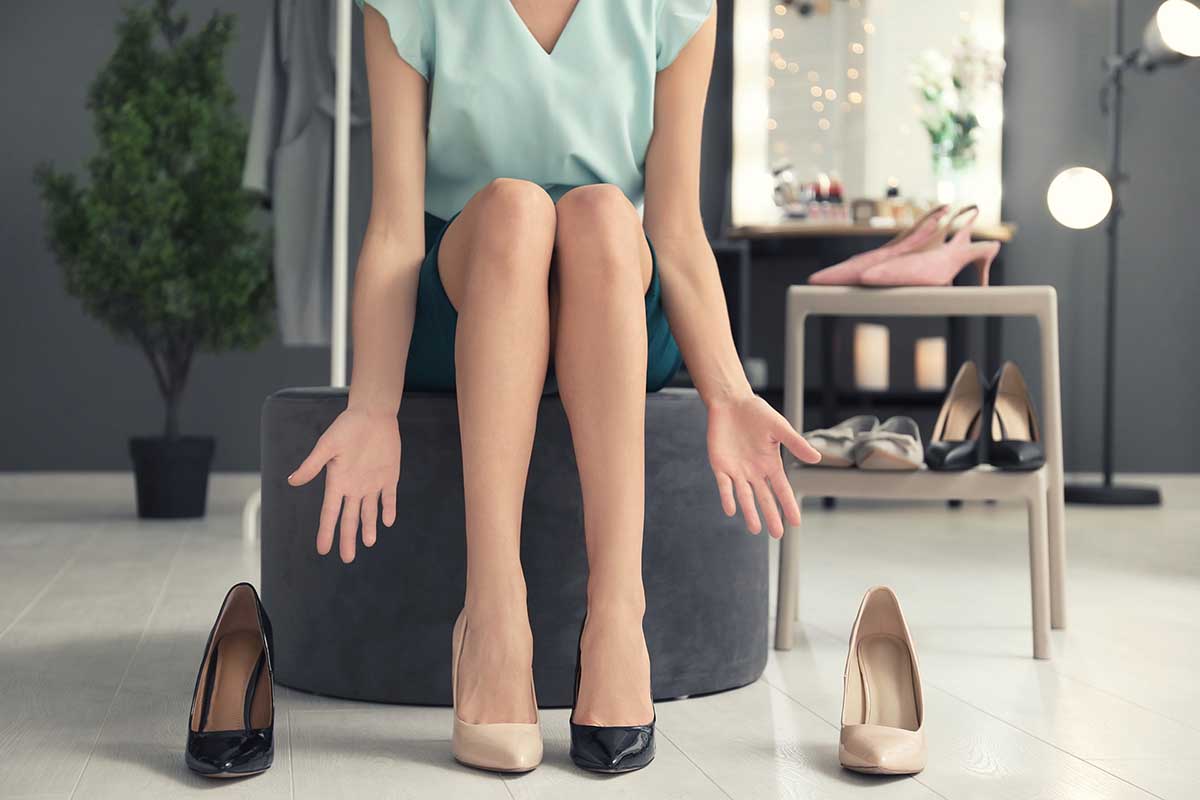- Posted on 10/06/2021
- By Jonathan
Choosing the right stilettos
Choosing the right stilettos.
An important factor in the quality of a shoe's manufacture is its stabilité.
Place both shoes on a flat surface and tap with your fingers on the 2 sides of each shoe, left and right. Your ankles will have to correct this defect with every step, which will make you very tired!
Another quality point is its balance.
Take a shoe in your 2 hands, toe in one and heel in the other. Balance the weight in each hand. If there's an imbalance, you'll have to compensate with each step. If the heel is too heavy, you'll tense your toes to hold back the shoe, which will tend to slip out of place - hello pain!
When it comes to materials, leather is preferable to others such as plastic, vinyl and nylon. Leather is more flexible and respects your foot's morphology. It's also more breathable, so perspiration and odors are much rarer.
The bottom of the shoe should also be made of leather. If not, go up a size and add a quality leather sole.
The right heel width
If your shoes show your heels, make sure they're not too narrow, and that the heel doesn't extend over the sides. If the shoe is narrower than your heel, the stability of your gait will be diminished.
Some brands include a comfortable cushion under the sole.
The right shape for your toes
If your sandals or open-toe pumps leave your toes sticking out, it's not aesthetically pleasing at all. Not to mention the pain they can cause.
Pointed-toe pumps will compress your toes, which isn't very comfortable, but it's a compromise with the aesthetics of the shoe.
The right size for straps and zippers
Some heels feature adjustable straps, zippers and other straps. If you want your shoe to fit properly, then you need to adjust them: too wide and your shoe will want to go, too tight and you'll be sore, not to mention the marks on your skin.
Make your adjustment with your feet on the ground, in a walking position. Some brands add an elastic band to the strap for added comfort. Make sure you put the protective tongue between the zipper and your foot, otherwise the metal will quickly injure you.
Try on the right shoes
First of all, take your time. There's no point in running off and doing a half-hearted test: the risk that you won't choose the right pair is too great.
Comfortable, with jacket off and handbag in hand, sit down and try on the 2 shoes. If you plan to wear them in winter with stockings or tights, bring along a pair.
If a leather sole is an option, you'll need to use one too. In short, you need to try the shoes on in exactly the same conditions as you're going to use them.
Ask yourself the following questions: Are you comfortable? Comfortable? Toes free? Weight evenly distributed? No pain? No strap marks? Space under your arch reduced to a minimum? Is the shoe stable under your foot?
If all you get is a negative response, then take a few steps looking straight ahead, without looking at your feet: is your balance not compromised? is the shoe supple enough?
What about your balance? Are you stable? No tension in your ankles to counter an imbalance? Are your shoulders, arms and neck not tense?
If all goes well, no pain on the horizon, then you can smile and decide on your purchase. The slightest pain is going to become a big one on a longer walk, even with leather shoes that should adapt a little to your foot.
Choosing the right heels will help you learning of the models' gait.
If you're invited to a wedding and you've made the wrong choice of shoes, you won't last the whole evening in heels and your gait will be distressing to look at, not to mention painful.
Pay attention to your morphology and maintain your musculature.

